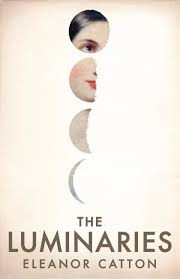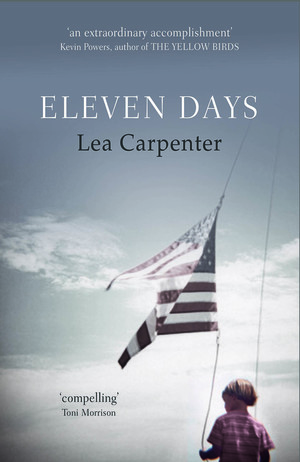I could write a review of “Americanah” as I do for many books by giving my own synopsis and then highlighting what I think are its major themes and qualities. But I don’t feel like I can. What I’d like to do first is discuss how reading this book has influenced my reaction to the recent horrific news of the abduction of around 200 female teenage students from a school in Borno, Nigeria. At about midnight on April 14th/15th these girls were taken from their dormitories and their school was burnt out by what is suspected to be a group of Islamic extremists who are against Western education. Some escaped before the lorries full of girls (it's not clear exactly how many) and their captors who posed as soldiers disappeared. Now, after two weeks, the girls are still missing. What some people and commentators are asking is why isn’t this bigger news?
Looking on the BBC news site today, this story appeared nowhere in the world news section. When I clicked on the African section I only saw this article at the very bottom of the feed which was last updated four days ago. Anne Perkins has notably written this article questioning and giving practical thoughts as to why the recent South Korean ferry tragedy has been given so much more news coverage than the abduction of schoolgirls in Borno. She reasonably surmises that the primary reason for one tragedy taking so much more attention than the other is one of economic disparity with South Korea being considered a “first world” country and Nigeria a “third world” country. One could argue that there is only so much space in the news and preferences must be given to some issues over others. Of course, this is true. But consider if this incident had occurred in France? The news would be at the top of the list every day in both Britain and America until the girls are found. However, since it’s in Nigeria I think the knee-jerk reaction to this story from most of the public would sound something like: How awful! What a politically unstable country. I guess you expect this sort of thing from there and there’s not much to be done. I hope they are found. Our empathy for the individuals involved is tempered by our understanding of the economic and political disparities between our countries. It's interesting to question why this would influence the amount to which the media and public allows these girls’ plight to infiltrate our awareness.
This desire to challenge my own and others’ assumptions regarding gender, class, nationality and race is what the experience of reading Chimimanda Ngozi Adichie does to you. She has prompted this response in all of her four published books (three novels and one book of short stories) which I’ve read and greatly admired. But it’s here in “Americanah” that the provocation to question is crystallized in the central character of Ifemelu, a bluntly honest and inquisitive Nigerian girl who moves to America to study. She continues living there for over a decade and creates an extremely popular blog “Raceteenth or Various Observations About American Blacks (Those Formerly Known as Negroes) by a Non-American Black.” Included in the text are various posts about Americans of many different races who Ifemelu encounters and where she makes sly, humorous and challenging statements about racial politics in America today. However, running alongside Ifemelu’s narrative is the story of Obinze, a man Ifemelu was in love with before she immigrated to the US. Obinze’s story takes a different slant as he travels to England where he works illegally and seeks residency through a sham marriage. Both characters eventually return to Nigeria where they rediscover their country through eyes that have been informed by a Western sensibility. The duo stories form a complex social portrait of these three countries and the way national and racial politics form identity.
The first three quarters of the book take place in the present during a simple trip to a hair salon for Ifemelu. Her backstory is recounted during the some six hours it takes to get her hair braided. Personally, I find getting my hair cut a very awkward necessary chore so to think of having my hair done for so many hours every few months is terrifying. However, as Adichie explores there is nothing simple when it comes to the way black hair is worn in America. The majority of white Americans assume that Michelle Obama's hair is naturally straight and if a black person allows their hair to be naturally kinky it's consciously or unconsciously viewed by many as a political statement. Ifemelu is told when applying for jobs: “If you have braids, they will think you are unprofessional.” This is just one example of the ways racism expresses itself subtly in American culture – not necessarily through vociferous cries of hatred but through dominant ideologies which pressure people of different races to correct their appearance, accent and attitudes to conform to a more tolerable idea of how that race is generally perceived. Despite liberal-minded views which wish to believe that we're now a colour-blind society she comes to the conclusion that “race is not biology; race is sociology.”
In some ways, moving to a foreign country is a necessary process for Ifemelu to better understand herself and find her own voice. As an opinionated person who can't hold her tongue she was always somewhat an outsider growing up in Nigeria. While she was popular and academically gifted “she felt sheathed in a translucent haze of difference.” However, it's only when she moves to America that her difference takes on a more evident form in a self-consciousness about her race. In America she discovers the projection of idealized states of existence: “it was the commercials that captivated her. She ached for the lives they showed, lives full of bliss, where all problems had sparkling solutions in shampoos and cars and packaged foods, and in her mind they became the real America” She also is informed about the culture through reading classic America literature: “as she read, America’s mythologies begin to take on meaning, America’s tribalisms – race, ideology and region – became clear.” There is also a funny, damning perspective of the new books being written by young novelists: “they were like cotton candy that so easily evaporated from her tongue’s memory.” These influences formulate Ifemelu's background understanding of the culture that “the manifestation of racism has changed but the language has not” and provoke her to challenge the way attitudes towards race and national differences are expressed by the people she encounters.
Chimamanda Adichie in conversation with readings from Americanah.
Alongside a host of these and many more sharp cultural observations, the primary drive of “Americanah” is that of a love story. Ifemelu and Obinze are split apart for a long period of time by circumstances. As they grow to change there are multiple ways communication between the two breaks down. This is a dynamic tough love which gradually transforms over time while each individuals develops and grows. After Obinze returns to Nigeria he establishes himself as an influential and prosperous figure in society who marries and has a child. His reunion with Ifemelu when she returns from America is not a simple affair. In a situation reminiscent of Wharton's “The Age of Innocence” the two find themselves in a romantically painful state where Obinze concludes that if they don't take a leap of faith “they would all die after trudging through lives in which they were neither happy nor unhappy.” Hounded by obligations and repressed by their own pride the question of whether the two can come together hangs heavily over the story. I found their dynamic complex relationship very moving.
Adichie is a tremendous writer. Through clear-sighted views of different levels and kinds of society she makes clear the contradictions, humour and flaws which should be so obvious but which most of us are blind to. It's a mark of true intelligence when a writer assiduously pursues meaning and provokes so many questions to challenge you into rethinking your views of the world. Her ability to create a layered story which straddles so much physical and emotional territory is extraordinary. This novel is truly transformative.




























